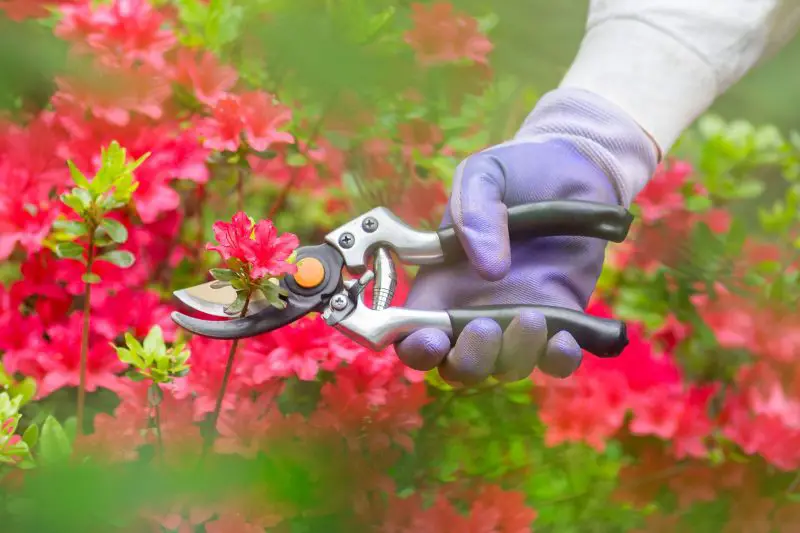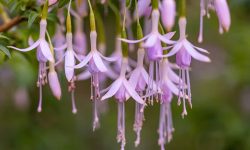Azaleas are among the most beloved flowering shrubs, admired for their stunning blooms and ability to enhance any garden landscape. Whether used as foundation plantings, standalone shrubs, or part of a flowering hedge, azaleas provide bursts of color during spring and sometimes into summer. However, to keep them healthy, vigorous, and aesthetically pleasing, proper pruning at the right time is essential. Knowing when to prune azaleas can make the difference between sparse, weak plants and lush shrubs with abundant blossoms.
Pruning not only shapes azaleas and keeps them tidy but also stimulates new growth, improves air circulation, and promotes more prolific flowering. The timing and technique are crucial, as pruning at the wrong time of year can remove developing buds, reducing bloom potential for the next season. In this detailed guide, we will explore the best time to prune azaleas, the reasons pruning is beneficial, and how proper pruning encourages stronger and fuller growth.
Understanding the Growth Cycle of Azaleas

How Azaleas Grow and Flower
Azaleas are members of the Rhododendron genus and have a unique flowering and growth cycle that influences when they should be pruned. Most azaleas produce their flower buds in late summer or early fall for the following spring’s display. This means that if you prune too late in the season, you risk cutting off next year’s buds before they have a chance to bloom.
After flowering in spring, azaleas focus on growing new foliage and setting buds for the next season. This period is critical because any significant pruning during late summer or fall interferes with the plant’s natural cycle, leading to fewer flowers.
Why Timing Matters for Pruning
Understanding the plant’s growth cycle is essential for successful pruning. The best time to prune azaleas is right after they finish blooming, typically in late spring to early summer. This timing allows the plant to recover quickly, grow fresh foliage, and set new buds for next year. Waiting too long into summer risks removing forming buds, which will affect the following season’s blooms.
Proper timing also ensures that energy is directed toward healthy growth rather than trying to heal cuts during periods of stress such as extreme heat or cold.
The Benefits of Pruning Azaleas
Encouraging Fuller and Bushier Growth
Pruning stimulates dormant buds along the stems, encouraging branching and creating a fuller, bushier appearance. Without pruning, azaleas can become leggy and sparse, especially if grown in shaded areas or neglected for several years. Removing old wood and spent blooms gives new shoots room to thrive, resulting in healthier and more vibrant plants.
Improving Air Circulation and Light Penetration
Thinning out overgrown branches allows better airflow and sunlight to reach the center of the shrub. Improved air circulation reduces the risk of fungal diseases and pest infestations, which can weaken plants over time. More light reaching interior branches also promotes uniform growth and flowering.
Rejuvenating Old or Neglected Azaleas
Older azaleas that have been left unpruned for years often become woody and produce fewer blooms. Rejuvenation pruning, performed at the right time, can revitalize these plants by encouraging new growth from the base and gradually restoring a healthier, more attractive shape.
Best Time to Prune Azaleas
Pruning After Blooming Ends
The ideal time to prune azaleas is immediately after flowering finishes in late spring or early summer. At this point, the plant has expended its energy on blooming and will soon begin setting buds for next year. By pruning right after the flowers fade, you give the plant several months to recover, produce new leaves, and form buds for the following season.
For most varieties, this timing falls between May and early July, depending on local climate and bloom period.
Avoiding Late-Season Pruning
Pruning in late summer, fall, or winter should be avoided unless necessary to remove damaged branches. Late pruning cuts off developing flower buds, reducing next season’s bloom display. Additionally, making significant cuts too close to winter can stress the plant and leave it vulnerable to cold damage.
Considering Local Climate Variations
In warmer regions where azaleas bloom earlier, pruning may need to be done sooner, while in cooler climates where blooms persist into late spring, pruning can be slightly delayed. Always prune as soon as possible after flowering to maximize results.
Techniques to Encourage Stronger and Fuller Growth
Light Shaping and Pinching
For younger azaleas, light pruning or pinching back the tips of new growth after flowering stimulates branching. This method encourages the plant to produce multiple shoots from each trimmed stem, leading to a fuller shrub.
Pinching should be done carefully by removing only the soft tips with fingers or pruning shears.
Thinning Overcrowded Branches
Thinning involves selectively removing crossing or overcrowded branches to open up the plant. This improves airflow, reduces disease risk, and allows sunlight to penetrate the entire shrub, encouraging healthy growth.
Cutting branches back to their point of origin or a lateral branch maintains a natural shape and prevents stubby regrowth.
Removing Dead or Damaged Wood
Dead, diseased, or damaged branches should be removed immediately after blooming. This not only improves the shrub’s appearance but also directs the plant’s energy to healthier parts, resulting in stronger growth.
Rejuvenation Pruning for Old Plants
For older or overgrown azaleas, rejuvenation pruning may be necessary. This involves cutting one-third of the oldest, woodiest stems back to near ground level right after flowering. Over two or three years, this gradual approach stimulates new shoots and restores vigor without overly stressing the plant.
Caring for Azaleas After Pruning
Proper Watering and Mulching
After pruning, azaleas benefit from consistent watering to support new growth. Keeping soil evenly moist, but not waterlogged, helps the plant recover quickly. Mulching with pine bark or pine needles conserves moisture, suppresses weeds, and keeps roots cool.
Fertilizing for Healthy Regrowth
Feeding azaleas with a balanced, slow-release fertilizer formulated for acid-loving plants encourages strong regrowth after pruning. Fertilizer applied in early summer supports foliage development and overall plant health but should be avoided in late summer to prevent stimulating tender growth before winter.
Monitoring for Pests and Diseases
Pruned plants are more susceptible to pests and diseases if not monitored. Regularly inspect foliage for signs of lace bugs, spider mites, or fungal infections. Early treatment with appropriate controls ensures healthy regrowth.
Common Pruning Mistakes to Avoid
Pruning at the Wrong Time
The most common mistake is pruning too late in the season, which removes developing flower buds. Always prune soon after flowering ends.
Over-Pruning
Removing too much growth at once can shock the plant and reduce flowering. Light pruning each year is better than drastic cuts.
Cutting Into Old Wood Improperly
Azaleas respond poorly to severe cuts into old, bare wood, as new shoots may not sprout readily. Rejuvenation pruning should be gradual to allow the plant to adjust.
Ignoring Plant Shape
Random or uneven cuts can ruin the natural form of azaleas. Always follow the shrub’s natural growth habit to maintain an attractive appearance.
FAQs About Pruning Azaleas
When is the best time to prune azaleas?
The best time to prune azaleas is right after they finish blooming in late spring or early summer, allowing enough time for new buds to form for the next season.
Can I prune azaleas in the fall or winter?
Pruning azaleas in fall or winter is not recommended because it removes developing flower buds and may stress the plant before colder weather.
How much should I prune to encourage fuller growth?
Light pruning by trimming tips and thinning overcrowded branches after flowering encourages branching and helps azaleas grow bushier and healthier.
Will pruning old azaleas make them bloom again?
Yes, gradual rejuvenation pruning over two to three years can stimulate new shoots and restore old azaleas, leading to more blooms in the future.
Do I need to fertilize azaleas after pruning?
Applying a balanced fertilizer for acid-loving plants after pruning supports regrowth and keeps the shrub healthy, but avoid fertilizing too late in summer.
Conclusion
Pruning azaleas at the right time and using proper techniques is essential for maintaining healthy, full, and beautifully blooming shrubs. The best time to prune is immediately after flowering ends, giving plants enough time to recover and set buds for the next season. Light shaping, thinning, and removing deadwood stimulate fuller growth and improve air circulation, while rejuvenation pruning restores vigor to older plants.
Caring for azaleas after pruning through proper watering, fertilization, and pest management ensures they remain strong and vibrant. With consistent attention and correctly timed pruning, azaleas will reward gardeners with abundant blooms and lush growth year after year.






